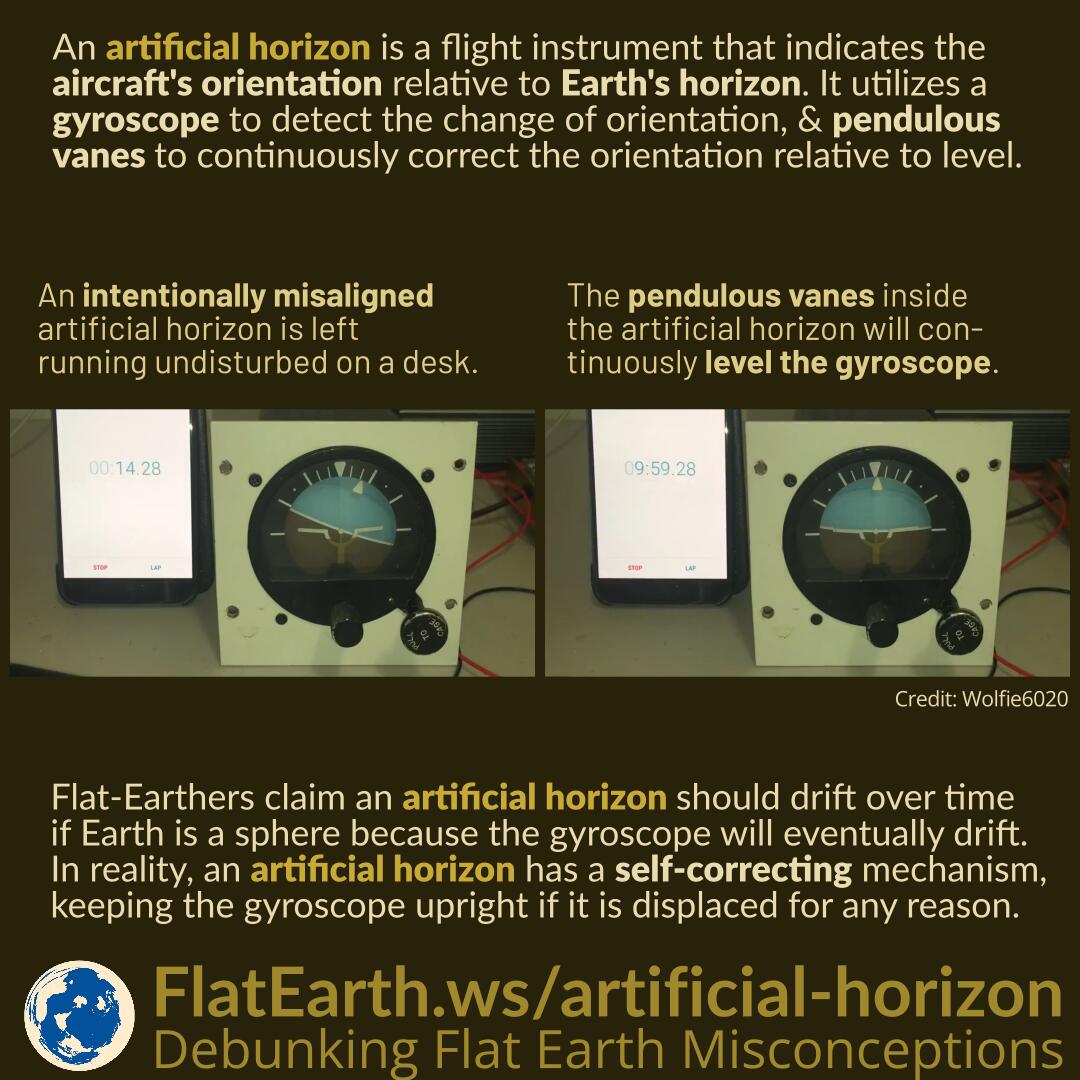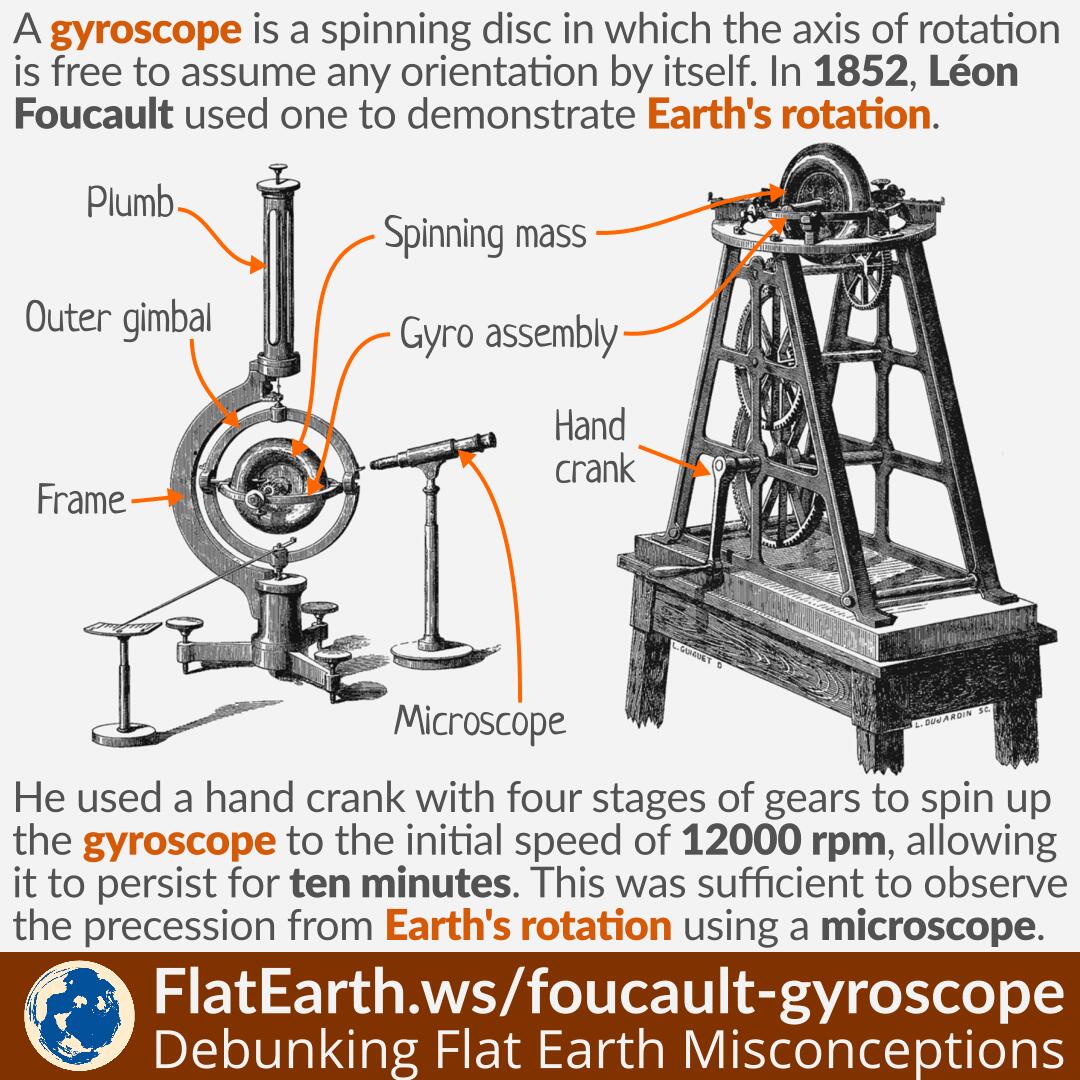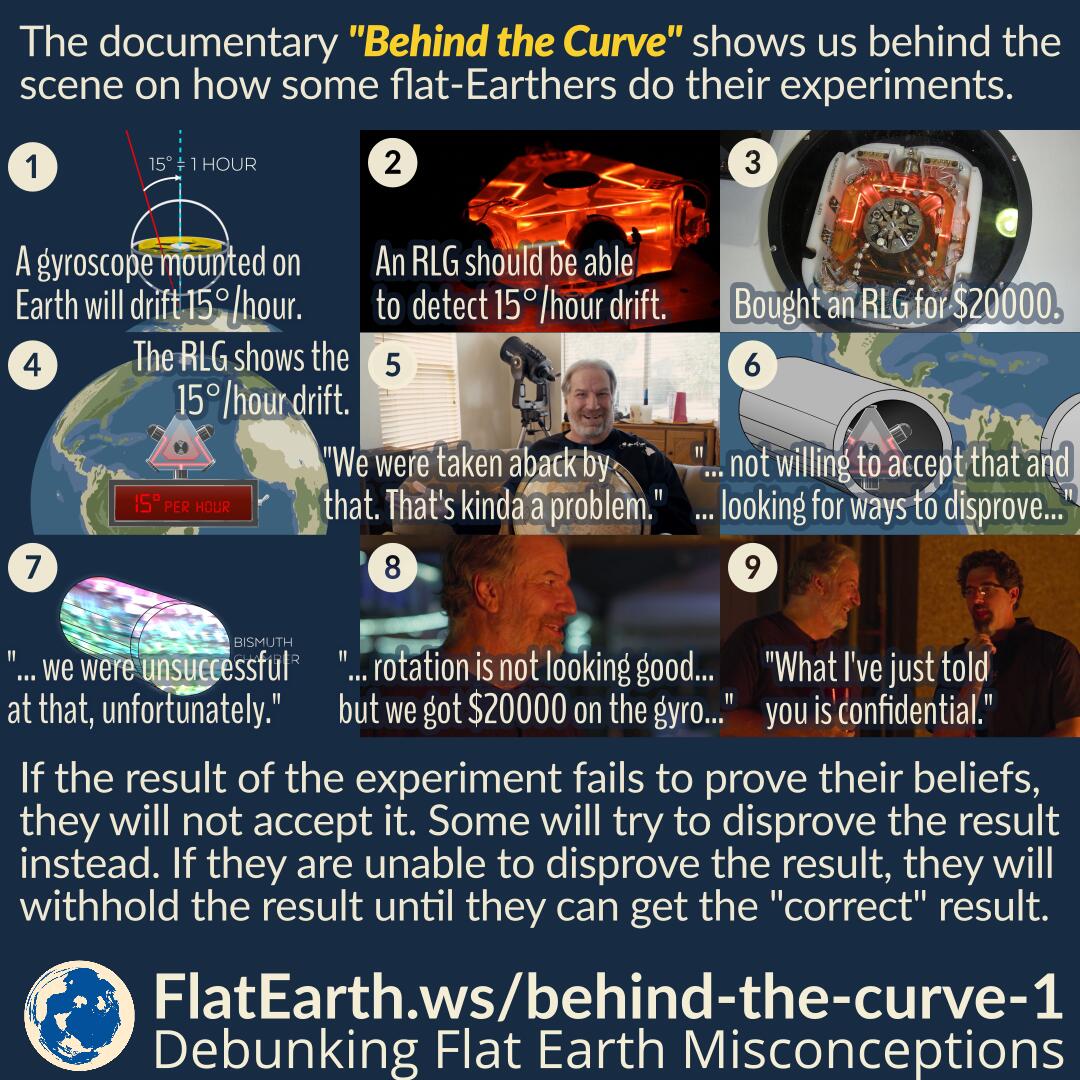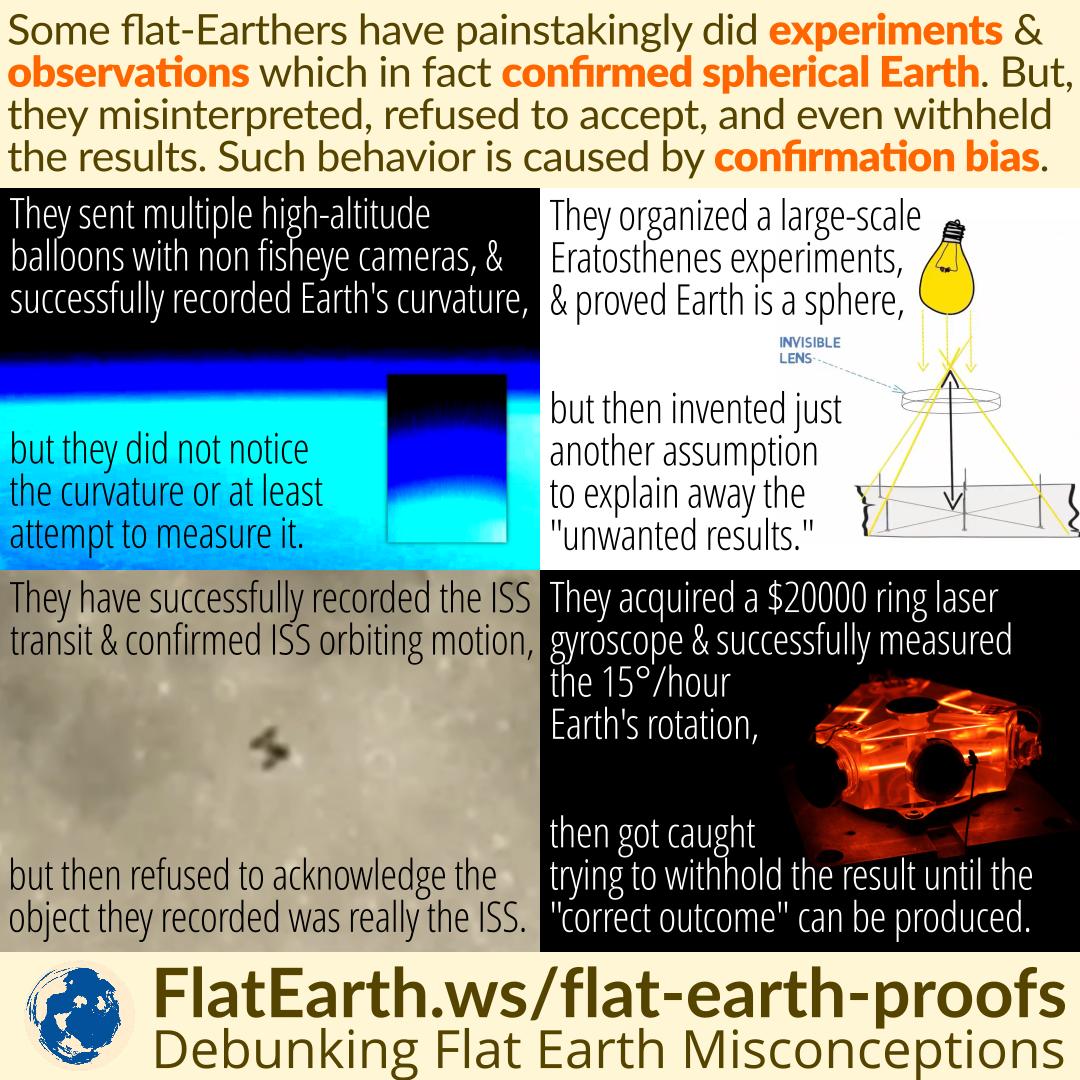An artificial horizon, or attitude indicator, is a flight instrument that indicates the aircraft’s orientation relative to Earth’s horizon and gives an immediate indication of the smallest change of orientation. An artificial horizon utilizes a gyroscope to detect the change of orientation and pendulous vanes to continuously correct the orientation relative to the level.
Flat-Earthers claim that an artificial horizon should drift over time if the airplane is flying over the spherical Earth because the gyroscope will eventually drift and no longer points toward Earth’s center. In reality, an artificial horizon has a self-correcting mechanism, keeping the gyroscope upright if it is displaced for any reason, including by the aircraft’s motion following Earth’s curvature.








